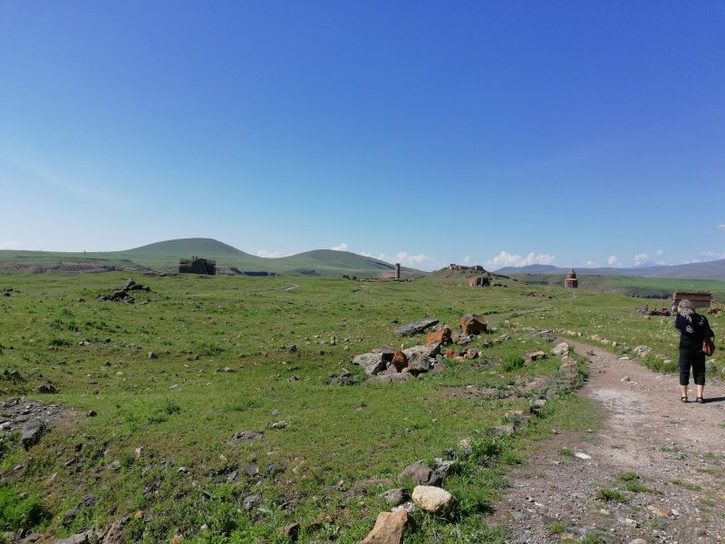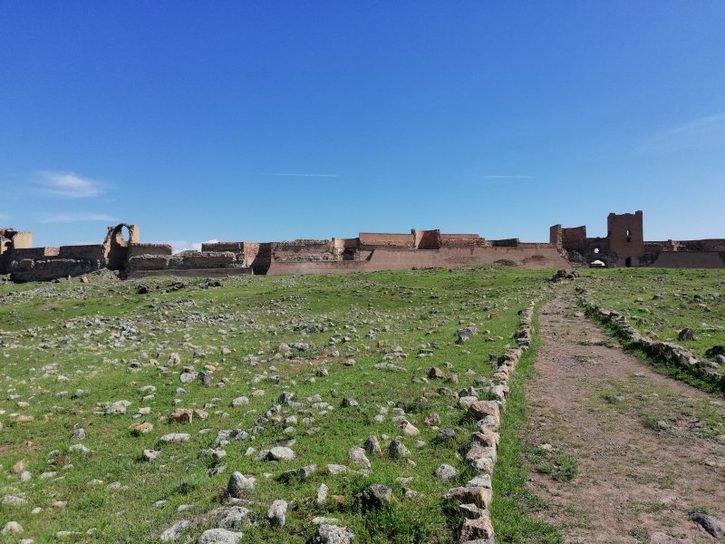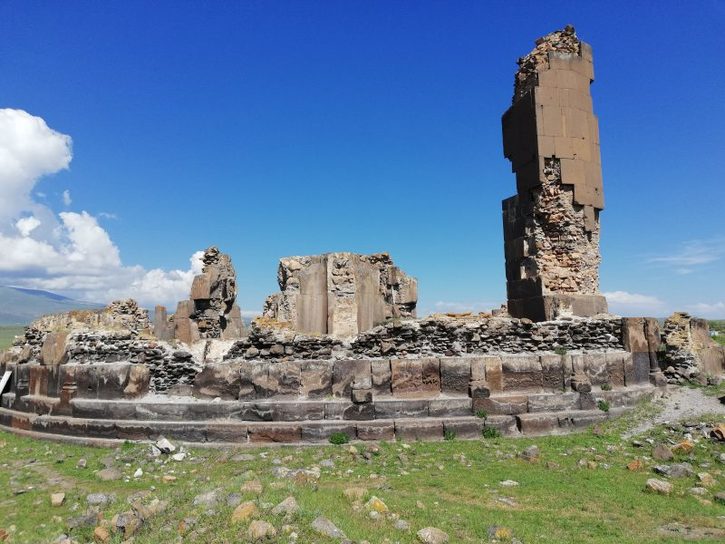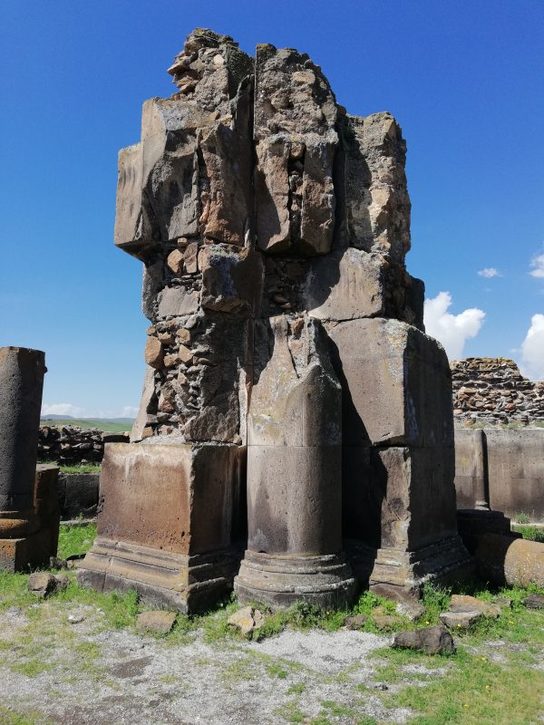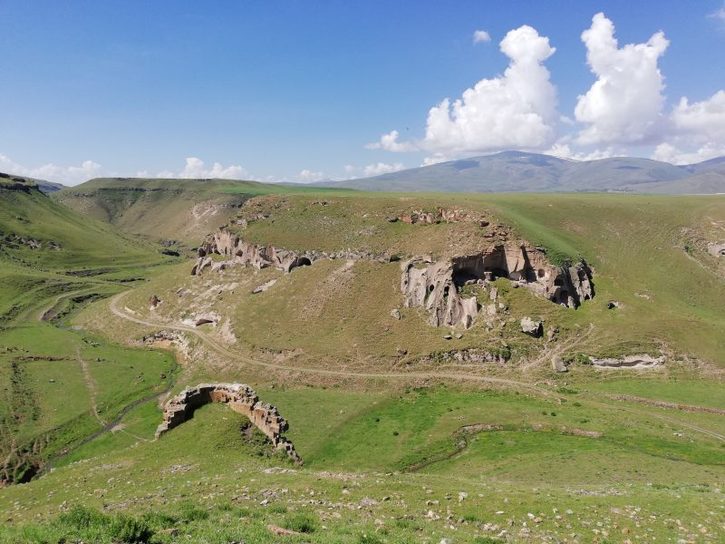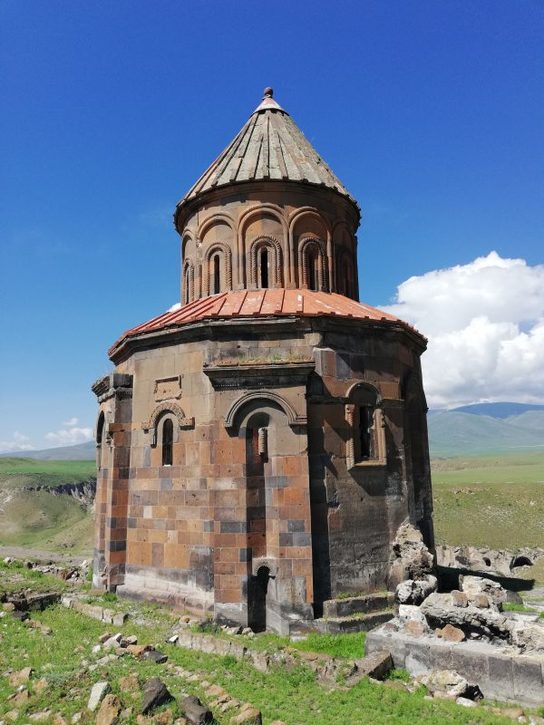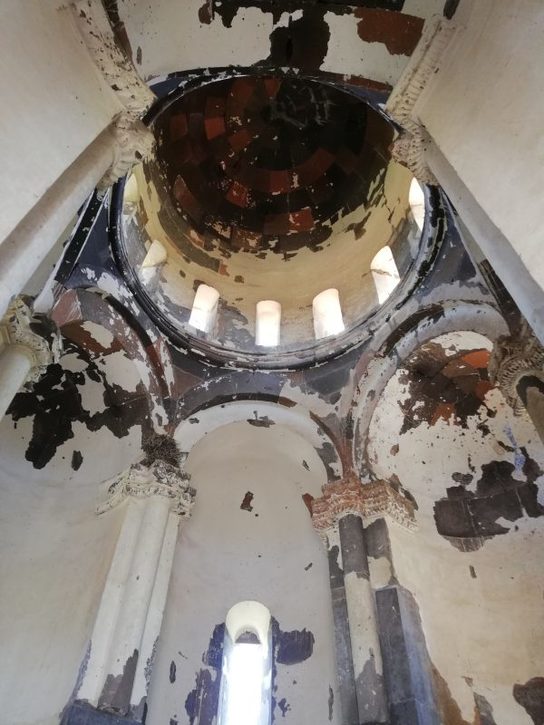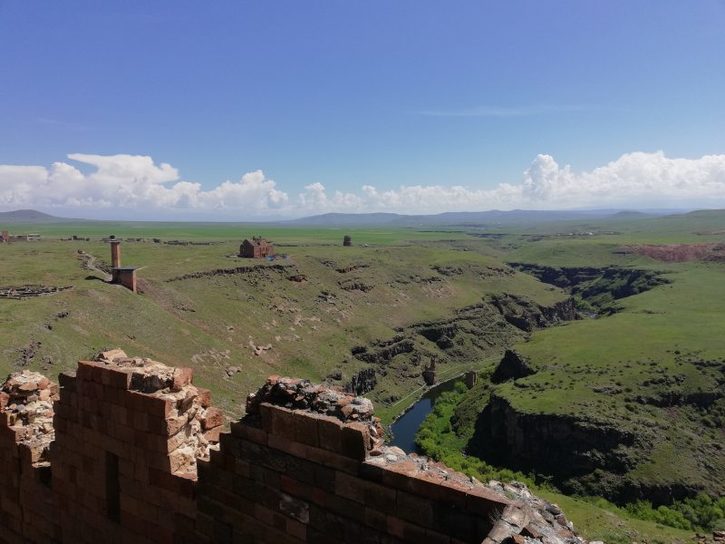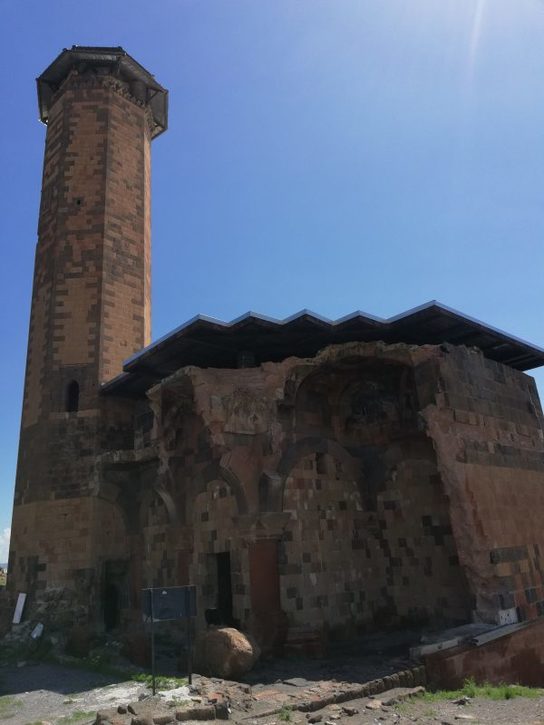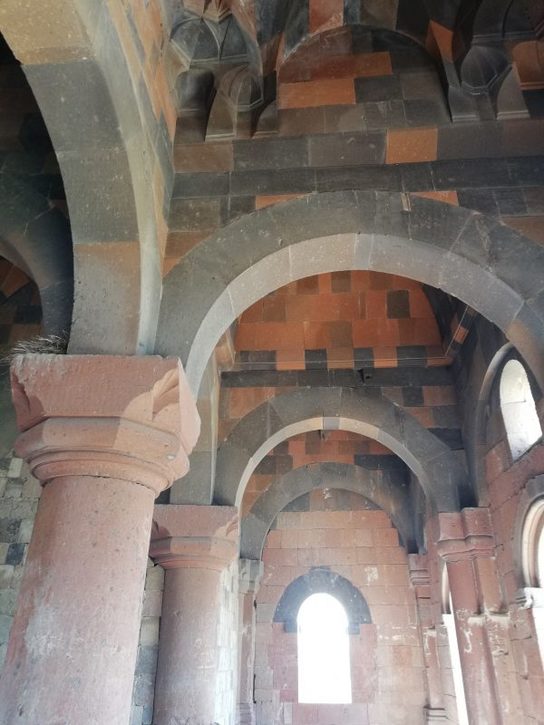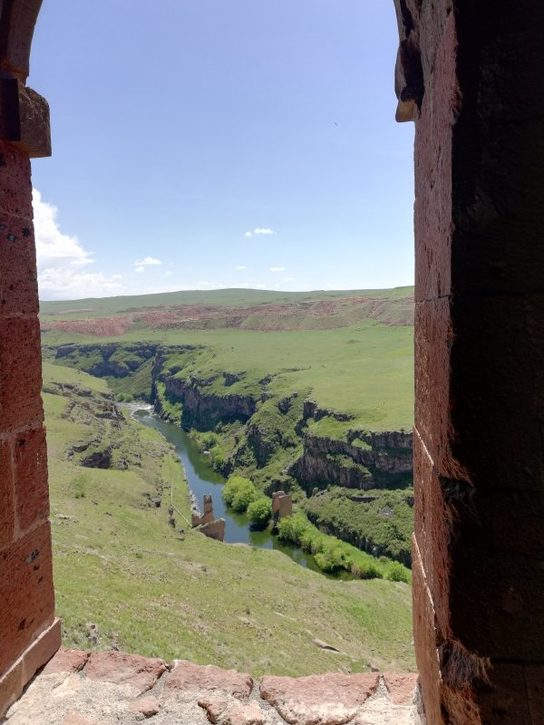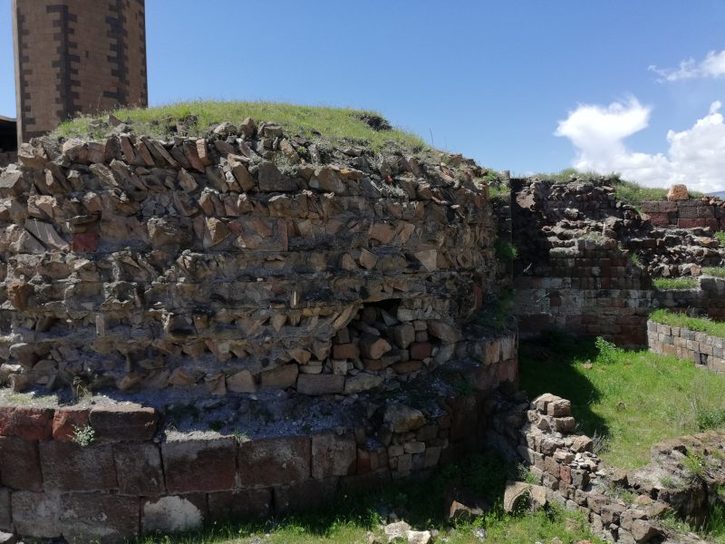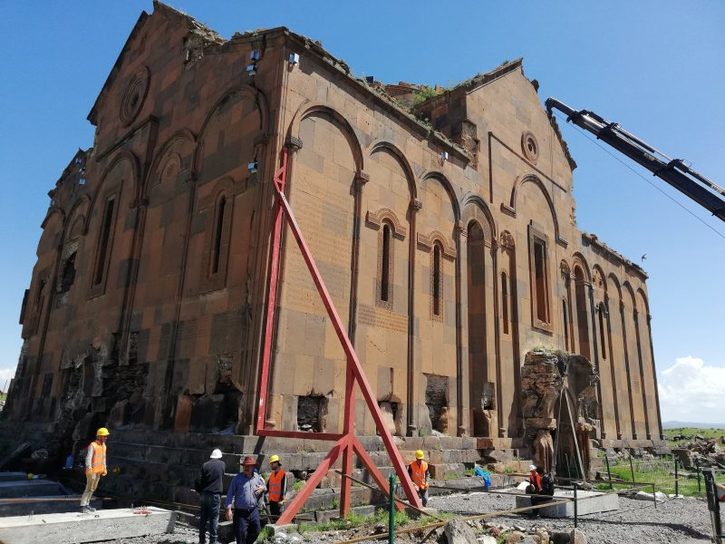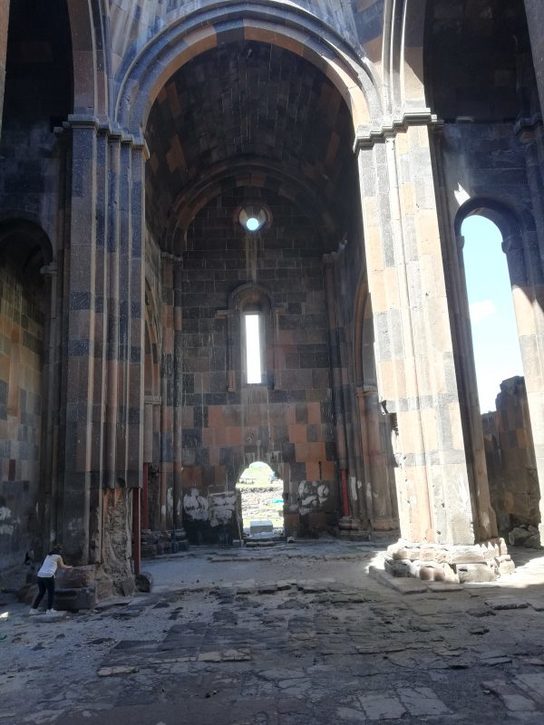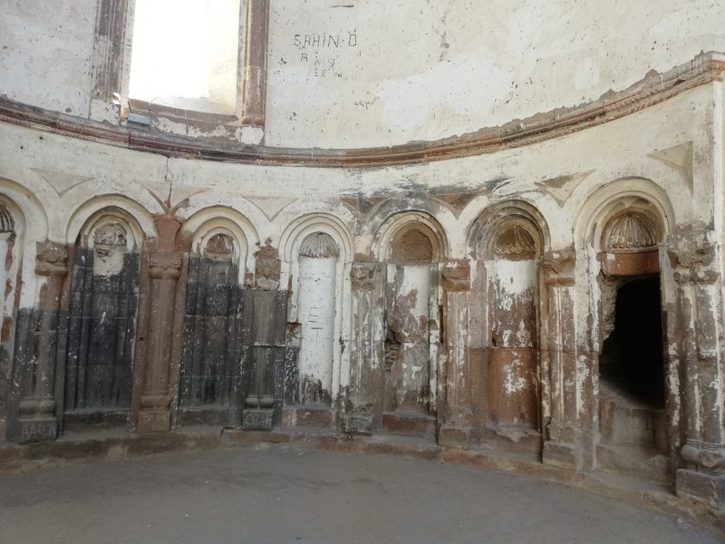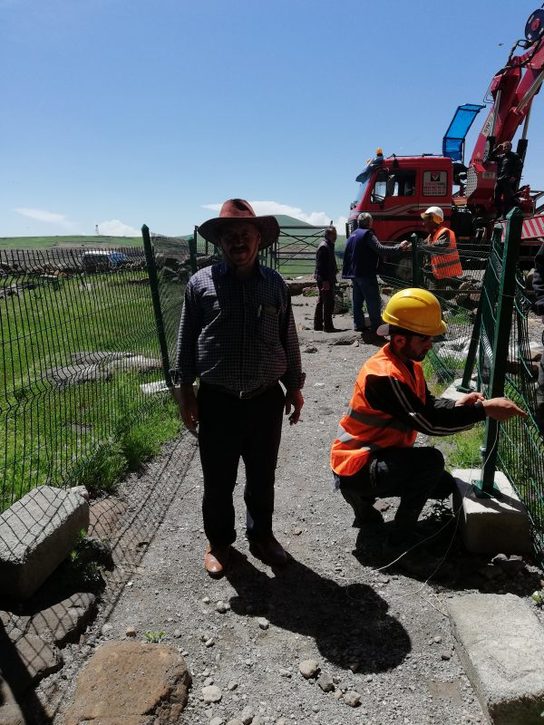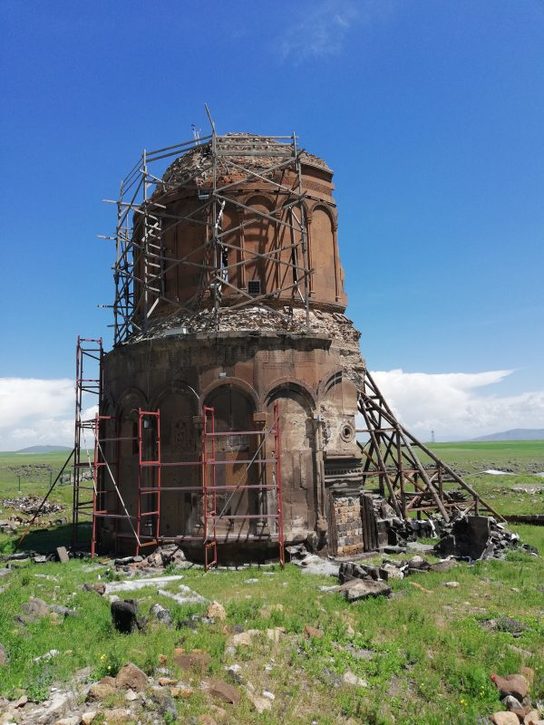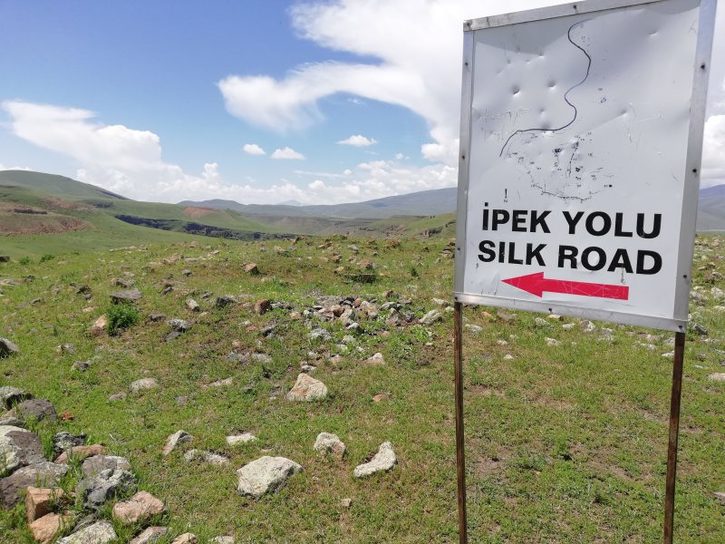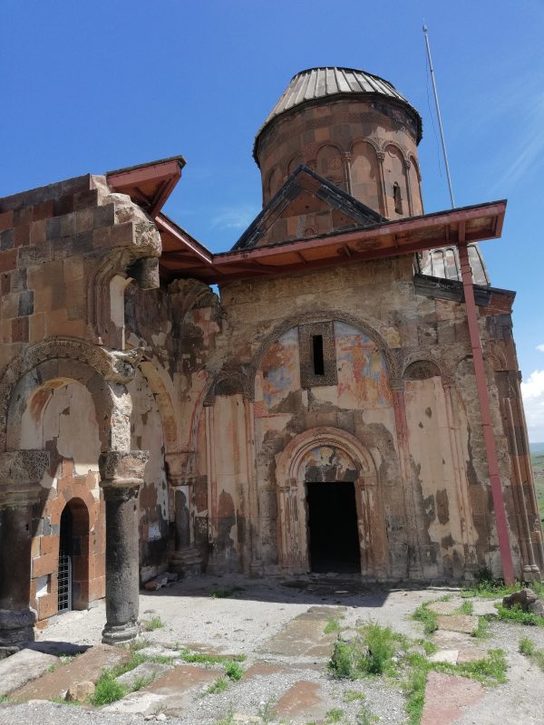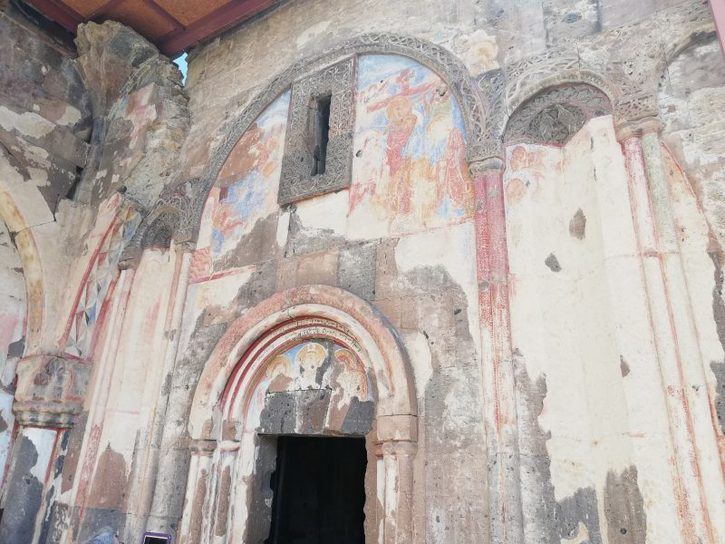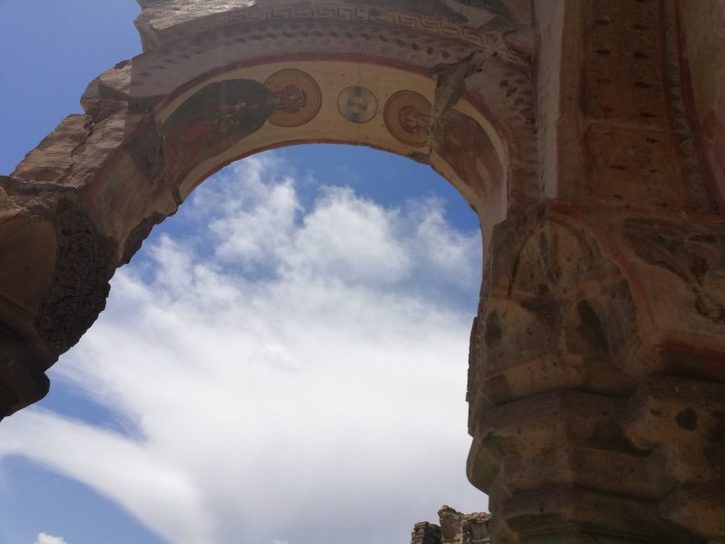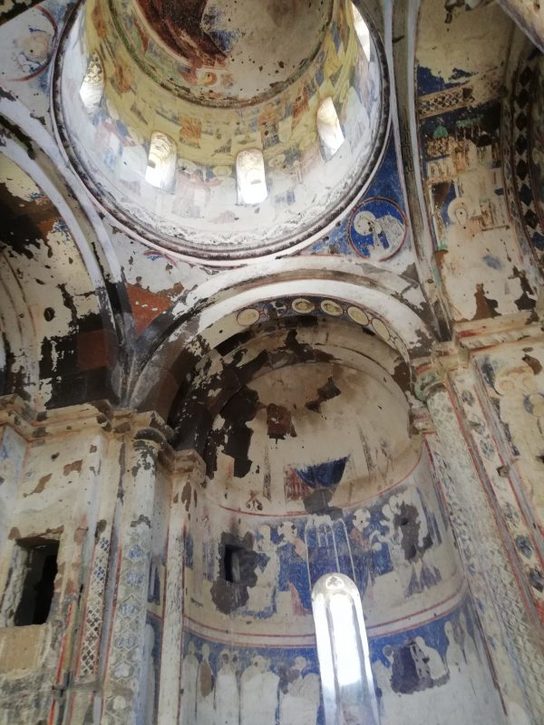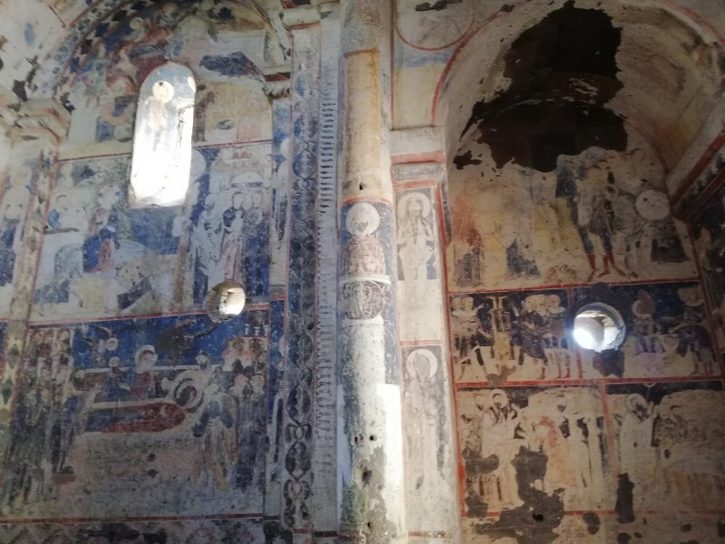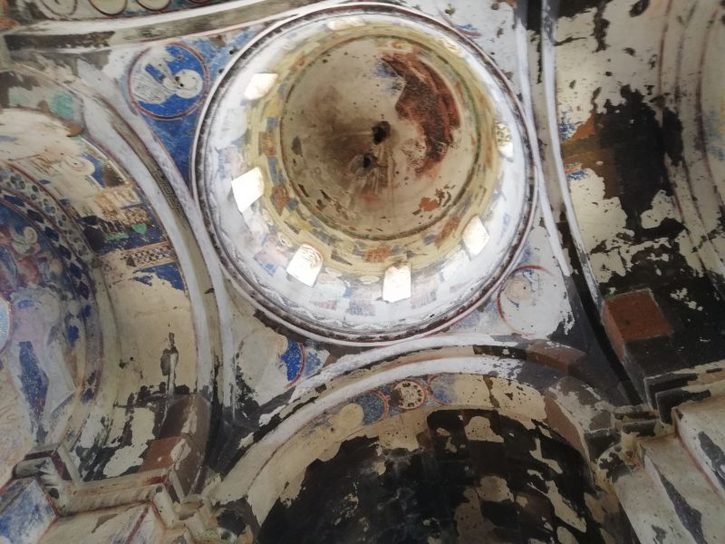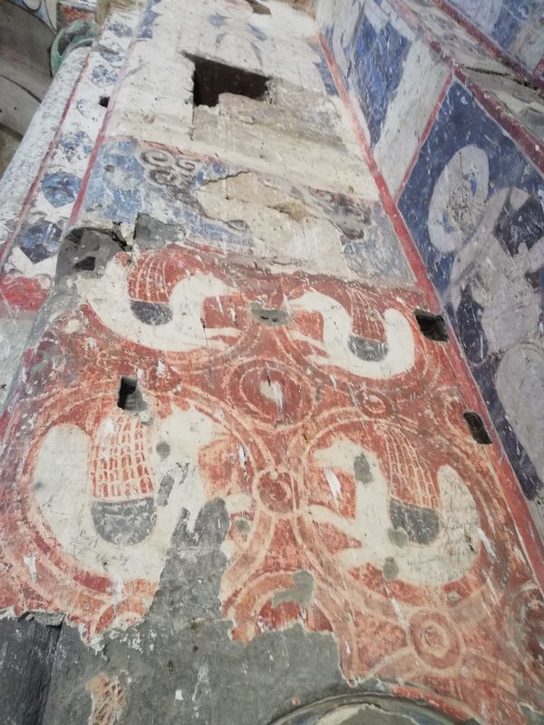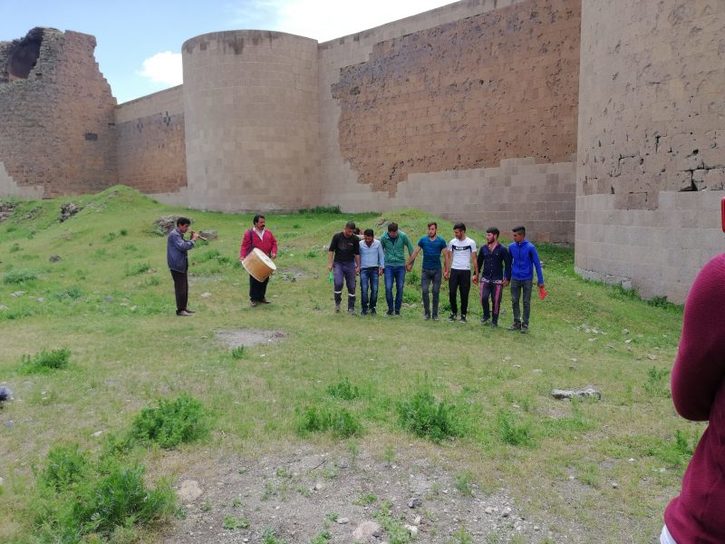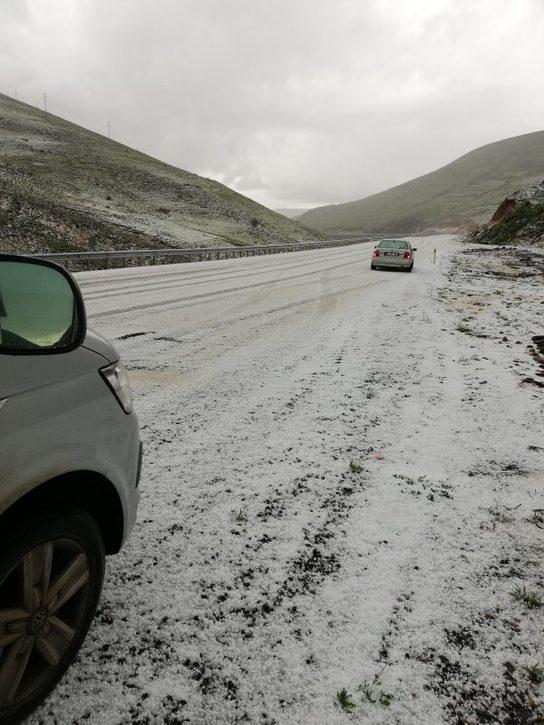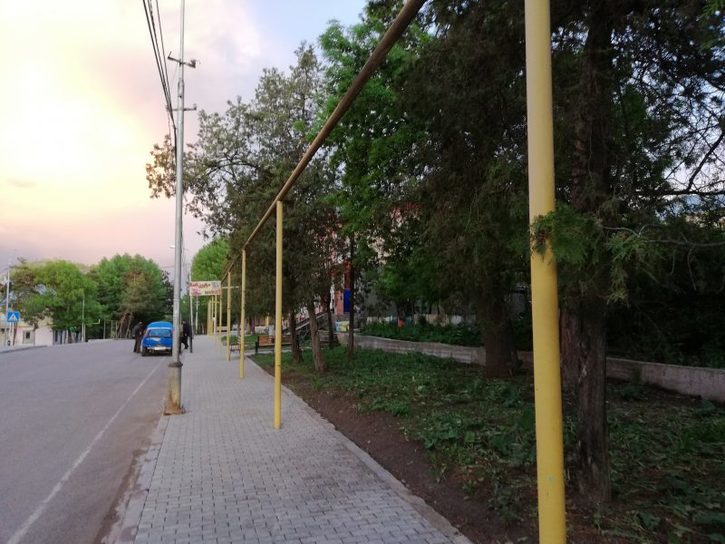Ani, a 5,000-year-old Armenian city located on the Turkish-Armenian border and located on a hilltop near the bank of the Akhuryan River, is the most famous among the Armenian capitals. Renowned for its splendour and magnificence, Ani was known as ‘The City of 1001 Churches’ and ‘The City of 40 Gates’. At its zenith, Ani rivalled the likes of Constantinople, Baghdad and Cairo in size and influence. By the 11th Century Ani had grown to over 100,000 people. It would later become the battleground for various contending Empires, leading to its destruction and abandonment. Today, hundreds of ancient churches, Zoroastrian temples, and other buildings, most of them in ruins, remain scattered across the rugged and desolate landscape.
Excavations have revealed that the area has been inhabited since ancient times, from at least as early as the Bronze Age, but the first historical records that mention ‘the Fortress of Ani’ trace back to the 5 th century AD. By the end of the 8th century Ani, with its nearby estates, was under the control of Bagratid dynasty. Ani began growing after 961 AD, when the Bagratid king Ashot III transferred his capital from Kars to Ani. During the period of only 40-50 years Ani grew from a little fortress town to a big medieval city.
It was in the 1880s, that ‘Underground Ani’, as locals call it, was first discovered. Georgii Ivanovich Gurdiev, who spent most of his childhood and youth in Kars, was with a friend named Pogosyan, when he noticed a disturbance in the soil. They began digging until they came across a narrow tunnel. It was the beginning of an incredible discovery – secret water channels, undiscovered monk cells, meditation rooms, huge corridors, intricate tunnels, traps and corners were found under the ruins of the ancient Armenian town of Ani.
In one of the rooms, Gurdiev found a scrap of parchment in a niche. Although he spoke Armenian very well, he had great difficulty reading the writing in the parchment. As it turns out, the text was written in an ancient Armenian language, the first sign that the underground world of Ani was very, very old.
After some time, Gurdiev managed to piece together the meaning of the unusual script. He learned that the parchment was a letter written from one monk to another monk. According to the parchment, there was a famous Mesopotamian esoteric school in the place where they found the letter. The “Merkhavat” school was founded in Babylon about 2,500 BC and survived in Mesopotamia until about the 7th century AD. In 1915 an Italian excavation team confirmed the presence of a monastery.
Since this time, new underground structures have come to light in Ani. The most important underground structures include the Giden Gelmez Tunnel, Yeraltı Anisi (Underground Ani) and Gizli Kapılar (Secret Doors). In total, there are currently 823 underground structures and caves that are known about in Ani today, including dwellings, stores, food shops, tombs and monasteries, chapels, mills, stables, and reservoirs.
We saw none of them because it is impossible to reach them, although one of the pics below shows the cave mouths to many of the tunnels. We saw:
the church of Tigran Honents, a rich merchant who built the church in 1215 and dedicated it to St Gregory, It has the most glorious frescoes including the last supper and four dragons as slain by St Gregory (St George, the patron saint of Armenia)
the Surp Amenap’rkitch church built in 1035 to house a piece of the true cross,
the cathedral which was started in 987 by Ani’s King Sembat and finished in 1010 by Katranide the wife of King Gagik. The architect also designed the Hagia Sophia in Istanbul. When the Seljucid sultan Alp Arslan conquered Ani, he performed his first Friday Prayer in the cathedral which was renamed the Fethiye Mosque. It is now being restored and a pic shows the chief restorer.
the Mosque of Manuchehr. When Ani was conquered by the Seljucids in 1071, the Emir Manuchehr was put in charge of the city. This was the first mosque to be built by the Seljucids in Anatolia. It lies on a branch road from the Silk Road to Arpachay.
The Inner Castle on a hill.
The Turkish baths
The Church of St Gregory
Leaving the main gate we heard a rhythmic beating sound and I assumed it was some idiot’s ghettoblaster playing gangsta rap. In fact it was a group of boys from the local villages doing a series of Kurdish dances to the sound of a double-sided drum and a local type of trumpet. Very culturally exciting. Probably the same boys who parked near us last night and made a lot of noise.
On the way back to Kars we saw a beautiful huge brown and white eagle and something that looked like a fox, perhaps a lynx. Also a very courteous policeman who drove up behind us when we stopped on the hard shoulder for lunch and wanted to know if we had a problem. The problem came later when we ran into a humungous thunder and hail storm between Daman and Artvin. The road was soon coated with two inches of huge hail storms so we stopped until it passed..
There were huge herds of cattle roaming everywhere, like Chinese tour groups without their selfie sticks. The herdsmen carried an umbrella, a mobile phone and a gun to shoot the wolves. The pass above the town of Posof had a sign saying “Rakim” (height) 2,550 metres. Some time during the storm we missed the road to Artvin and arrived at the village of Turkoguz, which I know is where a gas pipeline from the Caspian Sea passes through Georgia and into Turkey on its way to Erzurum. A barrier across the road told us we were leaving Turkey and entering Georgia. Crossing the border was painless if slow, partly because I suspect very few Brtish campervans come through this minor crossing. The Georgian customs man wanted everything taken out of the back of the van, and wanted to know what was in the portapotty. I showed him and he wasn’t impressed. We spent the night in a nice parking place just outside Vale, where I took a pic of the unusual gas supply system.
